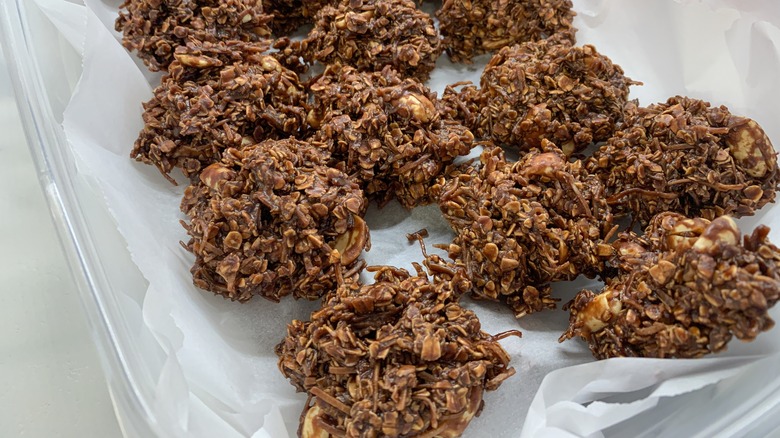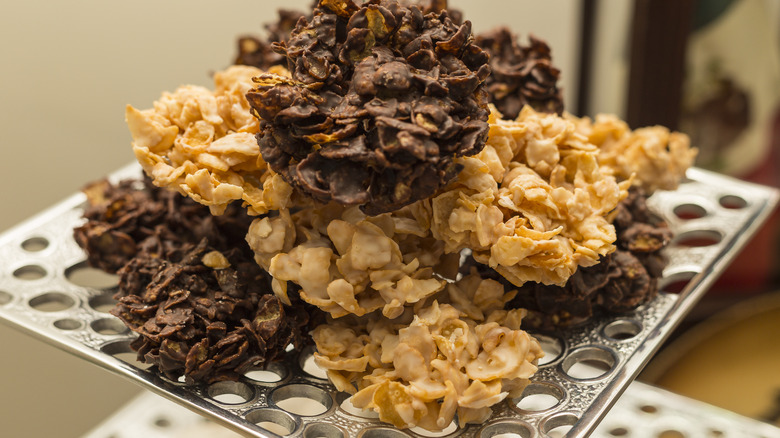The 1960s Leftover Chow Mein Hack That's Seriously Impressing TikTok
Chow mein technically refers to a stir fried Asian noodle dish, but many people also know it as a very different store-bought food product. It usually comes in a canister, and though the label reads "chow mein noodles," the contents don't resemble noodles at all — at least in the traditional sense. This type of "chow mein" doesn't need to be cooked, and it's instead used as a topping rather than as the base of a dish.
Ready Set Eat recommends using chow mein noodles to add crunch to salads and slaws, or as an alternative to the crispy fried onions in a green bean casserole. But back in the 1960s, it was also thought of as a dessert ingredient. As content creator B. Dylan Hollis shared in a TikTok featuring a recipe from a 1968 cookbook, chow mein noodles were a main component in a unique type of cookie that involved no baking at all. While many other recipes from the decade have lost their charm over the years, TikTokers seem to be particularly impressed by this chow mein cookie hack.
How to turn chow mein noodles into cookies
Rather than creaming together butter and sugar, making cookies with chow mein noodles starts off a bit different. According to B. Dylan Hollis' recipe (via TikTok), you'll simply need to melt chocolate and butterscotch chips in a bowl. You can also use the microwave for this, as The Irish Mother points out, but most old school recipes call for using the double boiler method over the stove. Once the chocolate and butterscotch chips are fully melted, you'll then add your chow mein noodles along with salted peanuts, and gently mix until both are fully coated. The final step is to dollop them onto a sheet of wax paper until cooled and hardened.
The result is a cookie recipe that has apparently stood the test of time. "So good! Always the day after takeout," one TikToker commented on the viral video. "From the start I was like, 'Yup, he'll like these!' My mom made these all the time," another added. This 1960s creation may not look like a traditional cookie, but those who have tried it say it's pretty tasty.
The recipe was inspired by cornflake macaroons
It might seem odd to transform chow mein noodles into a cookie, but according to research that food etymologist Dann Woellert published on his blog, the concept was originally inspired by the recipe for cornflake macaroons. Invented in 1923 by Mary Barber, a recipe developer for Kellogg, the cookies were made with cornflakes held together with egg whites and powdered sugar. Betty Crocker, a General Mills company, went on to publish its own version of the recipe in the 1963 cookbook "Betty Crocker's Cooky Book," made with its own cereals — Wheaties and Cheerios instead of cornflakes — in addition to using chocolate. On the same page, the baking brand also printed a recipe for "noodle clusters" that substituted chow mein noodles for cereal and added Spanish peanuts (via Hathi Trust Digital Library).
The recipe evolved over the years to also include butterscotch, and, per Click Americana, went by a number of names, including spoonoodles, chow mein chews, hopscotch cookies, and haystack cookies. But no matter what you prefer to call these cookies, they're sure to taste good either way.


